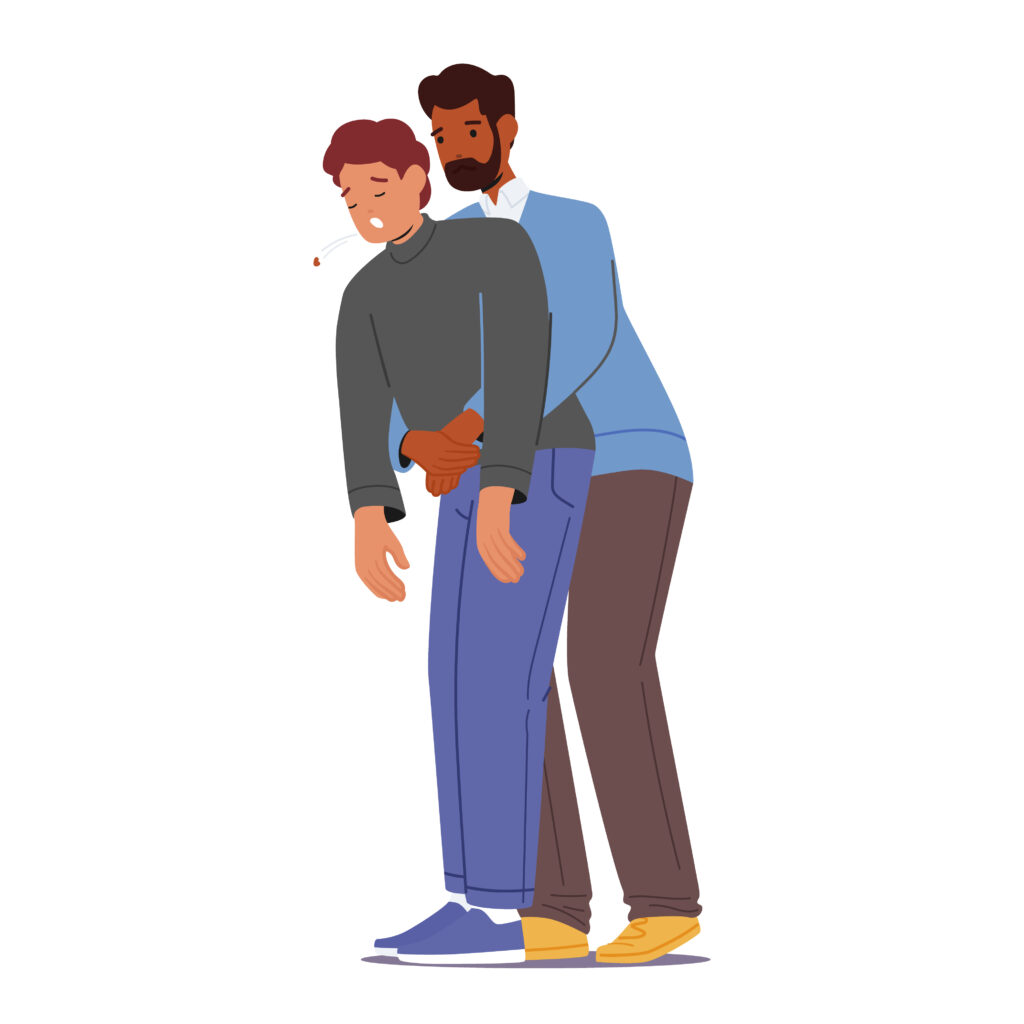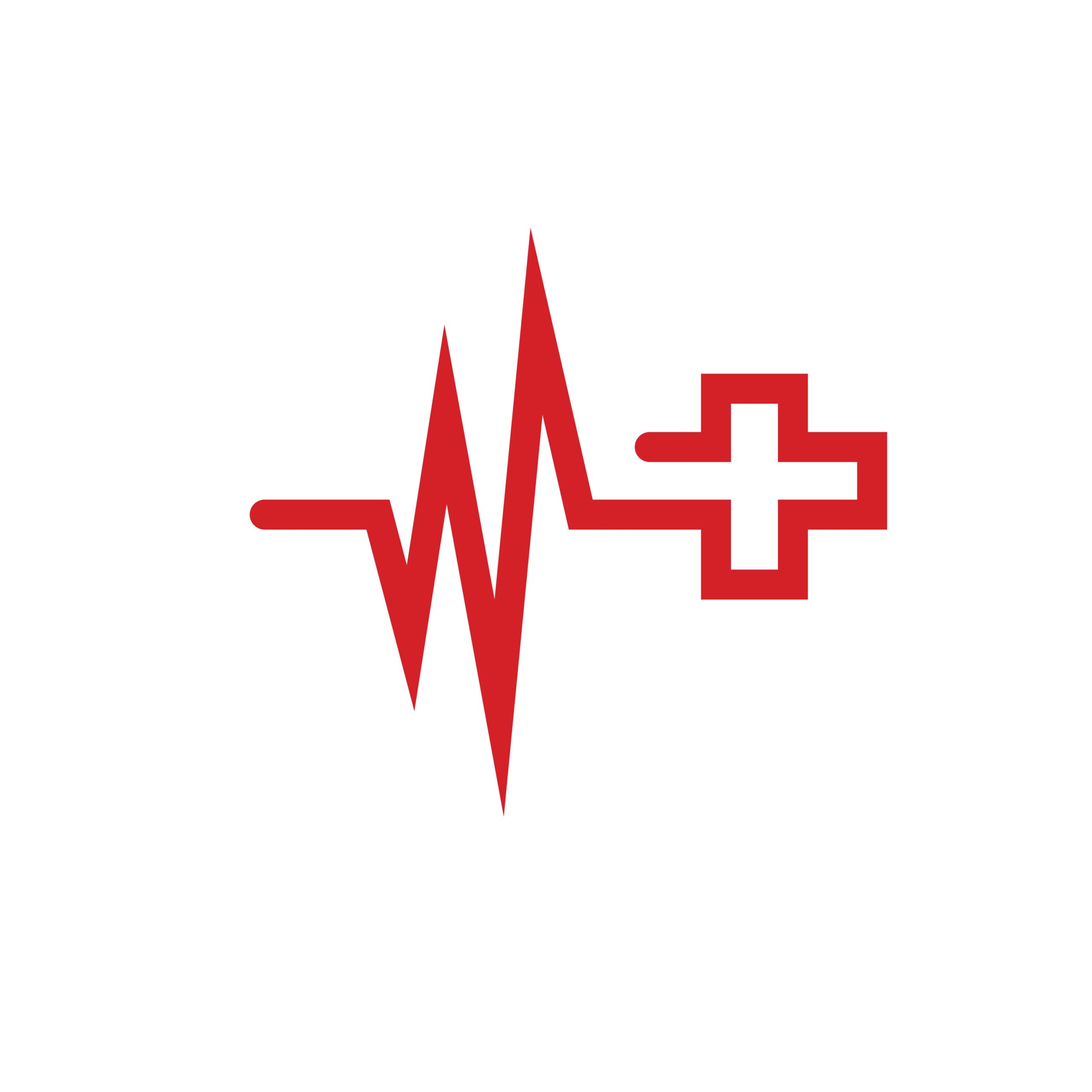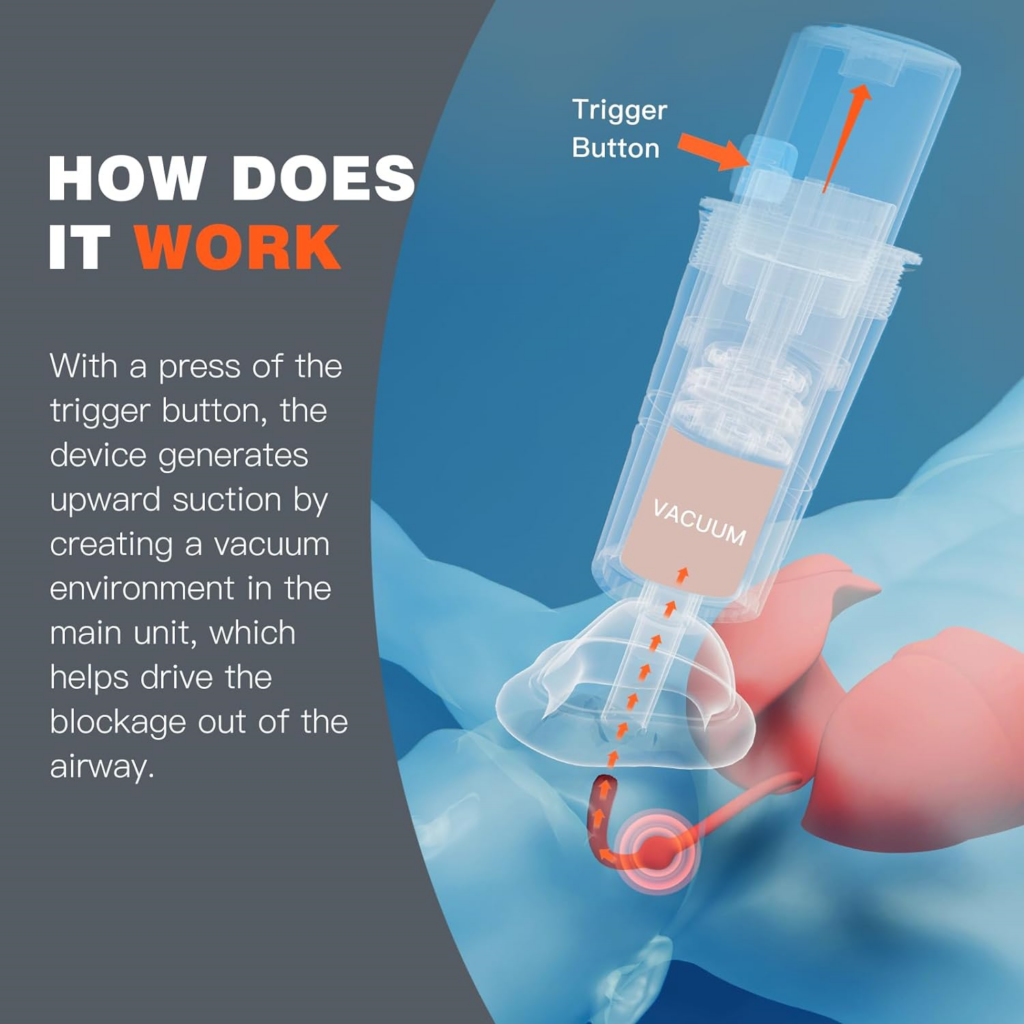This is a guidance on dealing with choking in two scenarios: when someone is conscious and when someone is unconscious due to choking. Maybe you can also choose your heimlich machine to help!
Dealing with Choking: Conscious Individual

Choking can be a terrifying experience, but staying calm and taking swift action is crucial when someone is conscious and choking. Here’s a step-by-step guide to help:
Recognize Signs of Choking:
Look for signs like difficulty breathing, coughing weakly, clutching the throat, or inability to speak or make sounds.
Encourage Coughing:
Initially, encourage the person to cough forcefully to try and dislodge the obstructing object.
Perform Abdominal Thrusts (Heimlich Maneuver):
Stand behind the choking person, wrap your arms around their waist, and make a fist with one hand.
Place the thumb side of your fist against the person’s abdomen, just above the navel and below the ribcage.
Grasp your fist with your other hand and forcefully thrust inward and upward in a rapid motion, as if trying to lift the person off the ground.
Repeat abdominal thrusts until the object is expelled or emergency help arrives.
Use Choking Rescue Device:
The Sonmol Choking Rescue Device features a patented design that is easy to use.
Dealing with Choking: Unconscious Individual

Performing CPR on someone who is unconscious due to choking is a crucial and potentially life-saving intervention. CPR is designed to provide artificial circulation and maintain oxygen supply to vital organs when a person’s own circulation and breathing have stopped. While performing CPR, you may also attempt to clear the airway if you can see an object causing the obstruction.
Here are the steps to perform CPR on an unconscious person due to choking:
Check Responsiveness:
Tap the person and shout loudly to check for responsiveness.
Call for Emergency Help:
If the person is unresponsive, call emergency services immediately.
Perform Chest Compressions:
Begin chest compressions. Place the heel of one hand on the center of the person’s chest, then place the other hand on top and interlock your fingers.
Position yourself directly over their chest and compress at least 2 inches deep at a rate of about 100 to 120 compressions per minute.
Check for Obstruction:
After 30 compressions, open the person’s mouth and look for any visible object. If you see an object, attempt to remove it with your fingers. If the object is easily accessible, try to remove it without causing harm.
Perform Rescue Breaths:
If the airway is still blocked, give two rescue breaths. Ensure the person’s head is tilted back, lift the chin, and give a breath lasting about one second each.
Continue CPR Cycles
Continue with cycles of 30 chest compressions followed by 2 rescue breaths until emergency services arrive or the person starts breathing on their own.
The key is to maintain the flow of oxygen to vital organs. The chest compressions generate blood flow, and the rescue breaths provide oxygen. If you can see and easily reach the obstruction, it’s reasonable to attempt to remove it. However, the primary focus is on chest compressions and rescue breaths to sustain life.
If I do CPR on people unconscious because of choking, would the obstruction go further and worsen the situation?
Performing CPR should not push the object deeper into the airway. The compressions generate pressure in the chest, which may help dislodge the obstruction. However, it’s important to perform chest compressions with adequate force and depth to be effective.
Remember that receiving proper training in CPR, including the Heimlich maneuver and dealing with choking emergencies, is crucial. CPR courses teach techniques and guidelines for providing effective and safe assistance during emergencies, ensuring that you respond appropriately to different situations. If you haven’t already, consider taking a certified CPR course for hands-on training and increased confidence in emergency response.
You can find free CPR or Heimlich online and in your community group. Hospitals and schools also provide free first-aid classes.
So How to Choose When People Choking? Heimlich Maneuver and CPR?
If a person is unconscious, the recommended first response is to start CPR, not the Heimlich maneuver. CPR is started when someone is unresponsive, not breathing, or not breathing normally. It is designed to maintain circulation and provide artificial ventilation to deliver oxygen to vital organs.
If you find someone unconscious, the immediate priority is to call for emergency help by dialing the appropriate emergency number (such as 911 in the United States) before initiating CPR. If you are not alone, you better ask for help from others.




